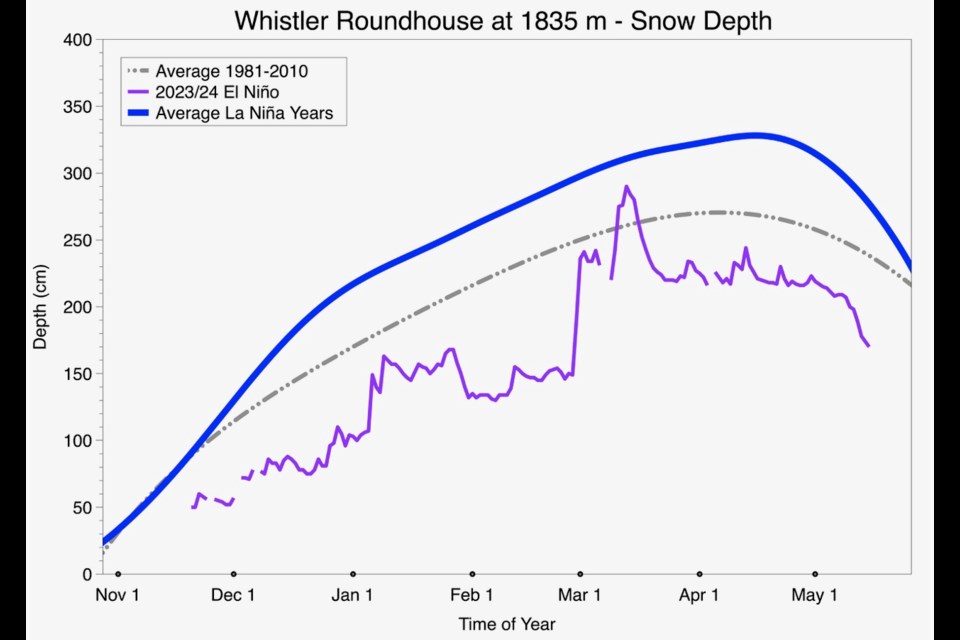“You should be waxing your skis,” according to Michael Pidwirny, a University of British Columbia Okanagan researcher who assesses the impact of climate change on North America’s ski resorts. Considering the chairlifts start spinning again in Whistler in a week, the forecast is welcome news.
In his annual winter forecast for Western Canada’s ski resorts, Pidwirny breaks down how El Niños and La Niñas impact winter weather and combines it with forecasting from the National Oceanic and Atmospheric Administration’s (NOAA) long-range seasonal forecasts. The outlook calls for a winter that’s “colder than normal, with higher-than-average precipitation for southern British Columbia and western Alberta.”
“The precipitation forecast is very, very good for both November, which we’re seeing right now, and for December," Pidwirny said. "For January and February, they predict the snow will be heaviest just to the south of Whistler in Washington State. But that’s so close that it will probably have an effect."
Whistler and ski resorts throughout North America suffered from a prolonged El Niño last year, resulting in low snowpack and chatter arguing it was the worst season ever for the ski town.
According to Pidwirny’s charts and reporting from editor Braden Dupuis, the worst winters in Whistler were actually during El Niños in 2014-15 and 1980-81, and the following ski seasons after these dreary, dry days saw big snowfalls.
Pidwirny has tracked how Whistler has fared during previous El Niños and La Niñas using data from Whistler Roundhouse, and his graphs offer a promising picture.
“We're talking about an extra 50 centimetres above the average. And almost more than 100 centimetres above what happened last year during the El Niño,” he said.
“Considering the NOAA long range forecasts, the history of what La Niña and El Niño do to Whistler and these graphs, it’s not a sure thing, but if this were sports betting, you’d bet for La Niña.”
While Whistler Village is wet, the recent rainfall is dumping snow in the alpine. Whistler Blackcomb’s snow report as of Nov. 14 showed 38 cm in the last 12 hours and a base depth of 102 cm.
The forecast leading up to opening day is looking promising, too, with highs below the freezing mark and more precipitation coming this weekend.
“December should be epic,” Pidwirny said.
Along with the promising forecast for December, Pidwirny noted it is now the coldest month of winter, replacing historic lows in January—not because the Christmas-month is colder, but because the remaining winter months are getting warmer.
“December hasn’t changed much since the '90s, but there's been an obvious increase in warming of January, February and March, which is likely caused by global warming,” he said.
Along with the forecast comes good news from Whistler Blackcomb, which announced in a press release Nov. 14 that upgrades to Jersey Cream Express have moved along quickly enough that the six-seater will be spinning on opening day, Nov. 22.
“We’re thrilled to see this project so close to the finish line and on track to start welcoming guests on as we kick off the season next week,” said Belinda Trembath, Chief Operating Officer at Whistler Blackcomb. “The Jersey Cream upgrade project was a labour of love from our dedicated teams and development partners. We can’t wait to see this latest investment in the guest experience come to life this winter and have a positive impact on one of our most popular zones.”
The upgrade from a four-seater is expected to improve wait times by increasing uphill capacity by 29 per cent.




